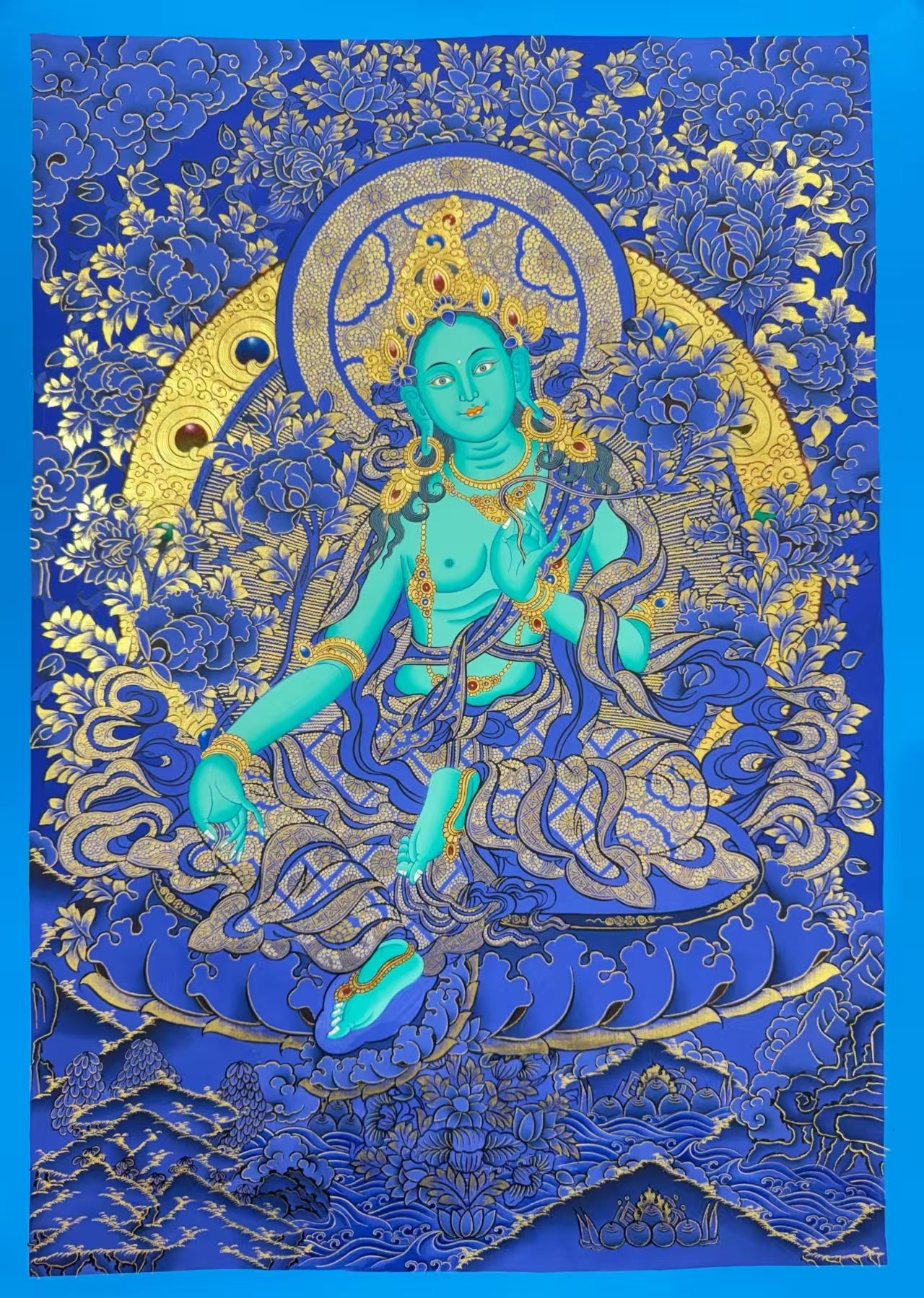
Green Tara Thangka 24K Gold Hand-Painted Tibet 53cm*37cm
Reliable shipping
Flexible returns
Product Information
Name: Thangka of Yellow Jambhala
Size: 53cm × 37cm
Technique: 24K Gold Hand-painted
Origin: Tibet
Specifications: Excluding frame; requires self-framing after purchase
Green Tara is believed to be the emanation of the tears from the right eye of Avalokiteshvara (the Bodhisattva of Compassion), symbolizing kindness, happiness, good fortune, and a fulfilling life. In traditional Chinese culture, Green Tara represents auspiciousness and blessings. In Tibet, people often wear Tara amulets to pray for good luck and happiness.
Green Tara is also known as the "Swift and Courageous Savior" or the "Savioress from the Eight Great Fears," as she rescues beings from eight types of calamities: fires, lions, elephants, snakes, floods, imprisonment, thieves, and evil spirits—hence her name.
Iconography of Green Tara:
She is depicted in bodhisattva attire, with a vibrant emerald-green body symbolizing eternal youth and life.
She wears a small five-Buddha crown and radiates rainbow light, adorned with precious jewels and celestial robes, her lower body draped in layered skirts—exuding both elegance and solemn compassion.
Posture: Seated on a lotus moon disc, her left leg is folded in meditation (single lotus position), while her right leg is extended (left bent, right relaxed).
Hand gestures and attributes:
Her right hand holds a blue utpala flower (blue lotus) in the gesture of granting wishes (varada mudra), resting palm-outward on her knee.
Her left hand holds a blooming blue lotus at her heart in the "Triple Jewel Mudra," with the raised index, middle, and little fingers representing the Buddha, Dharma, and Sangha.
Symbolism and Meaning of Green Tara:
Wisdom and Compassion:
Green Tara embodies wisdom and compassion. Manifesting in feminine form to nurture sentient beings, she helps them transcend worldly suffering, dispel afflictions, and guides them toward liberation. The color "green" represents life and hope, signifying renewal and the vitality of growth.
Protection from Calamities:
As the "Savioress from the Eight Great Fears," Green Tara swiftly overcomes demonic obstacles, liberates beings from the cycle of suffering, and ensures rebirth in the Pure Land. The word "Tara" (meaning "savior") reflects her role in aiding both self and others, embodying the spirit of benefiting all beings.
Virtue and Universal Love:
The title "Mother" signifies her boundless maternal love and all-encompassing compassion, reflecting the nurturing essence of the universe and the selfless nature of great love.
Auspiciousness and Well-being:
In Chinese culture, Green Tara is a symbol of good fortune, health, and longevity. Wearing Green Tara jewelry is a common practice to invoke blessings, harmony, and a long, healthy life.
For women, Green Tara is a treasure-like guardian. Whether for career-driven professionals or full-time mothers, she offers spiritual solace and strength. Career women facing pressures and challenges may find her compassionate presence a reminder to maintain kindness and resilience amid competition. For mothers dedicating themselves to their families, Green Tara brings inner peace and safeguards their children’s growth.
Green Tara is for everyone who seeks love, warmth, inner peace, and personal growth. Regardless of profession or life circumstances, she can serve as a spiritual refuge and source of empowerment.
Placement Suggestions:
A mandala thangka (scroll painting) is ideally placed in areas such as:
- The living room, study, or office ;
- Behind the owner's seat ;
- Near a window where sunlight gently enters
